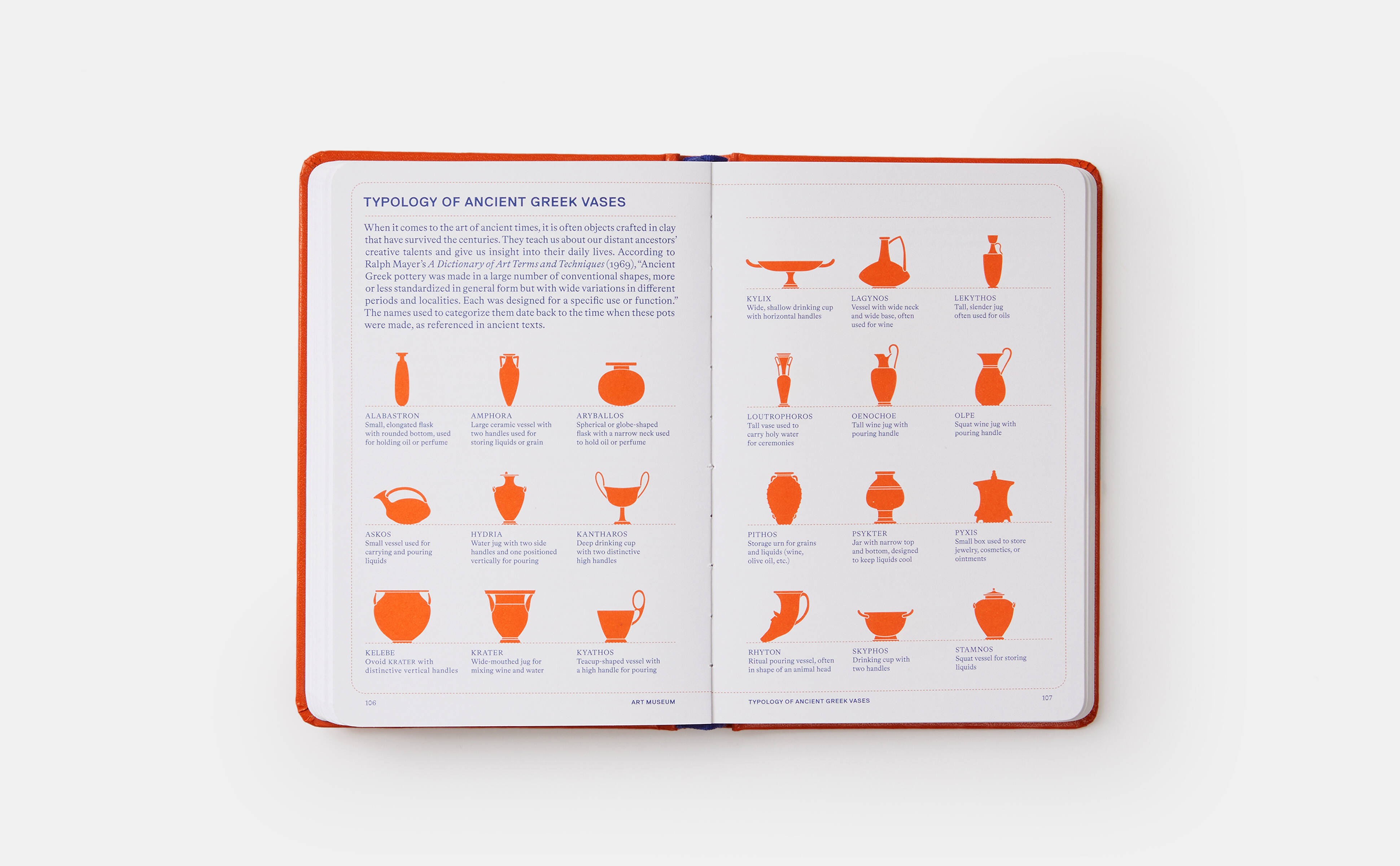
From flowers, to hand gestures to vases, Artifacts will help you decode the hidden meanings in art museums
Don’t know a Grecian vase from your elbow? Allow our new collection of fascinating art facts to fill you in
From the Mona Lisa’s smile to the bafflingly beautiful contemporary landscapes of Nicolas Party, much of art’s power lies in its mystery. Yet we should never confuse true mystery with wilful ignorance. In every art museum in the world there are plenty of meaningful motifs that are missed or misinterpreted by much of the general public. Want to understand them? You could spend a couple of years engaged in serious study, or then again you could just get Artifacts. Our new book, subtitled Fascinating Facts about Art, Artists, and the Art World, is filled with lists, graphs, quotes and illustrations, shedding light on every conceivable aspect of fine art, from theft to selfies, museum architecture to famous art world couples.
The book is divided into five sections: Art School; Art Studio; Art World; and Art Museum. They’re all filled with rich, engaging information, but the Art Museum pages are truly instructive, especially if you’re heading to an exhibition any time soon and want to get the most out of it.
Take, for example, the book’s guide to the types of hand gestures you’re likely to come across in many ancient and Renaissance paintings and sculptures. “In classical Greece and Rome, a code of hand gestures was devised and used by orators when they gave speeches in political or public settings,” explains the book. “In Renaissance portraiture, hands were as important as the face, often being the only other visible part of the body. Artists frequently used the positioning of fingers and hands as a rhetorical device, a form of nonverbal communication, or a way to create interesting and dynamic compositional forms.
“In his Treatise on Painting (1632), Leonardo da Vinci outlined the semantics of body language to convey the interior thoughts, emotions, or beliefs of his sitters. As Walter Isaacson notes in his 2017 biography of the artist, ‘Italy was then, as now, a nation of hand gesture enthusiasts, and Leonardo in his notebooks recorded a variety of them.’”

Pages from Artifacts
One finger pointing towards the sky indicates salvation and ascension to heaven after death, as shown in da Vinci’s Saint John the Baptist; a woman’s hand on her lower abdomen is a sign of pregnancy, as in Raphael’s La donna gravida; and a finger pointed toward the viewer suggests the work is a self portrait, as evidenced by Raphael’s Self-portrait with a Friend.
Some flora and fauna have also conveyed fixed meanings in art, as our book explains. “For artists in early modern Europe, symbols effectively communicated the teachings of the Christian church to a predominantly illiterate audience,” says the text in Artifacts, “and while some of the most common symbols in religious allegory—the apple, the dove, and the lily, for example—contain consistent meanings, others could be interpreted more freely.”
The symbolism of a dove for peace, or an apple for wisdom and sin, won’t come as a particular surprise for contemporary viewers, yet more would be enlightened to learn that the placement of a quince in a painting can mean resurrection and marriage, while a monkey can indicate lust or malice.
Further specialist knowledge lies on the pages that cover Greek vases. Of course, much of the artistry that we have retained from ancient Greece lies on the surfaces of its vases, yet did you know their shapes indicated different uses, names and meanings? An amphora is a tall ceramic vessel with two handles used for storing liquids or grain; a krater is a wide-mouthed jug for mixing wine and water; while a rhyton is a ritual pouring vessel, often in the shape of an animal head.

Artifacts
We may no longer receive libations from vessels such as these, but, thanks to Artifacts, some of the knowledge they store lives on. To read the full lists from these sections as well as much more, order a copy of Artifacts here.